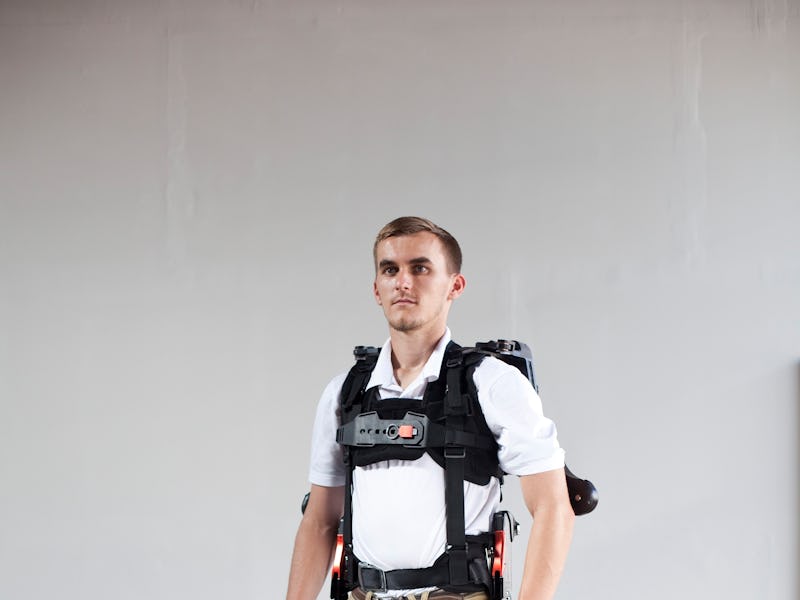Ever wanted strap yourself into a robot exoskeleton and gain extraordinary powers? The SuitX MAX, a three-part exoskeleton launched Wednesday, promises to do just that. Components for the leg, back and shoulder aid workers in everyday tasks, reducing strain and allowing them to go beyond their physical limits. In the future, exoskeletons like these could boost human strength in the workplace, working alongside robots in situations where a person’s oversight is most needed.
“The MAX solution is designed for unstructured workplaces where no robot can work as efficiently as a human worker,” Dr. Homayoon Kazerooni, founder and CEO of SuitX, said in a statement. “Our goal is to augment and support workers who perform demanding and repetitive tasks in unstructured workplaces in order to prevent and reduce injuries.”
Whereas normally the body would start to ache repetitively lifting the same weight, a University of California Berkeley study found that the back portion of the exoskeleton reduced muscle exertion by 60 percent.
The leg portion of the SuitX MAX in action.
Exoskeletons are a growing area in the automation drive, answering the question of how technology can aid the remaining humans. Augmenting the worker experience could lead to exoskeletons controlling robot armies, like the system Kindred A.I. has patented. This would increase productivity beyond a single person’s enhanced strength by recording motions and teaching an array of bots how to complete a task.
SuitX has previous experience in the exoskeleton field. In February, the company revealed a $40,000 suit to help paralyzed patients walk again. The low price point compared to similar exoskeletons (some of which run for as much as $80,000) is part of a SuitX drive to reduce prices and bring the suits to mass market.
It may be a while before the exoskeleton becomes a staple of working life, but initial efforts show the ways these new technologies can benefit workers without needing to learn a whole new skill set.
